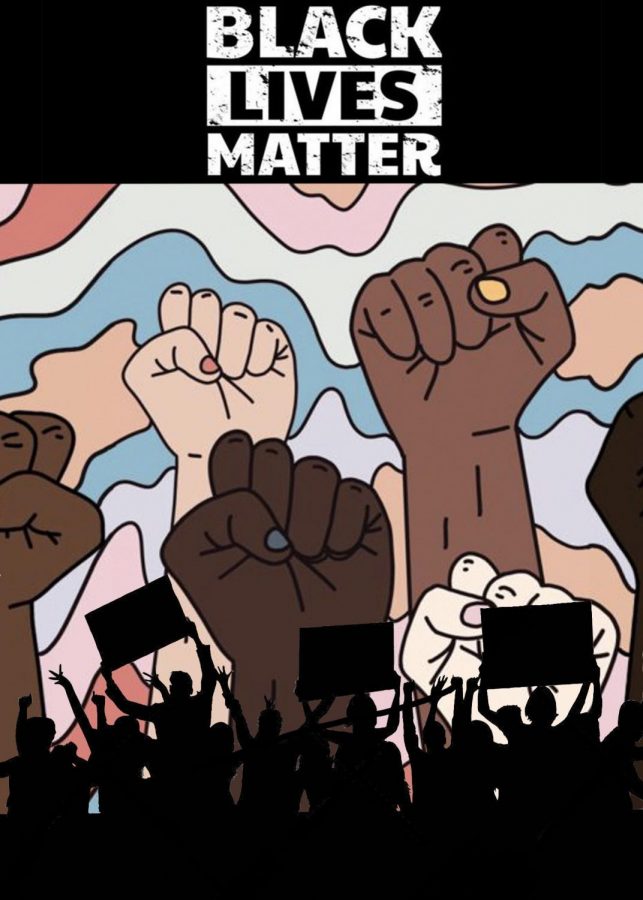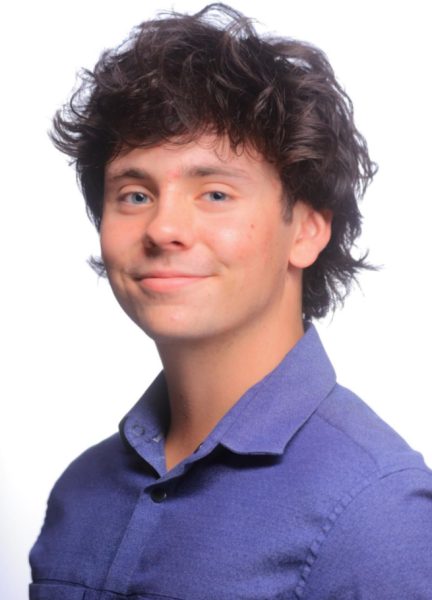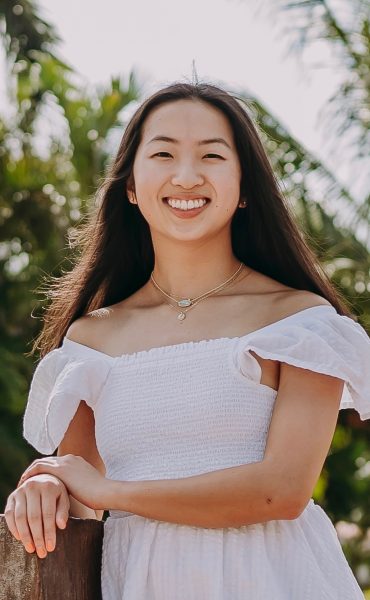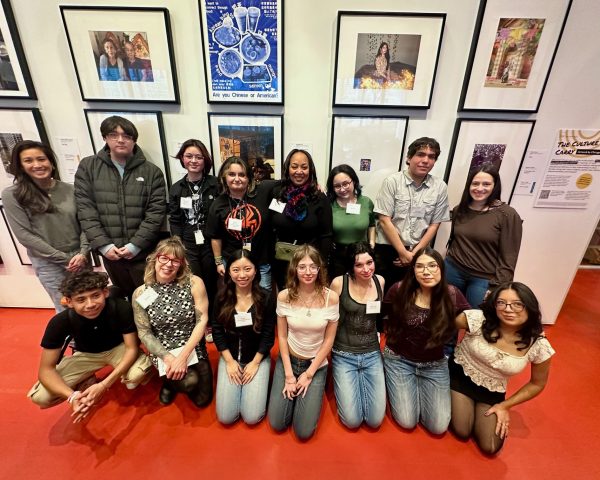Teaching history as it happens: Something for more than just history teachers
This piece was created by Abriana Rosario for Ms. Diamond’s “Call to Action” project after the officers who killed Breonna Taylor were not charged for her death. (Illustration by Abriana Rosario)
Shortly after the officers that killed Breonna Taylor were not charged with her murder in September, Ms. Diamond assigned an atypical assignment to her Digital Imaging students, an assignment she called “A Call to Action.” In this assignment, her Digital Imaging students were asked to create a digital art piece that would be a “Call to Action” for whatever cause or issue they were passionate about.
“In the beginning of the year in class when my students did a Call to Action project it wasn’t something that is part of the curriculum,” Diamond said. “Call to Action and Social Justice projects are usually saved for the end of the year. When the news broke, it was jarring. I wanted to talk with the class about it and I think it’s important to adapt lessons to incorporate national and world events.”
Ms. Diamond, a Digital Imaging and Photography teacher, said she thinks it is incredibly important to teach and have discussions about current events no matter what class you teach.
“I wholeheartedly believe it’s important, and it would be an incredible disservice to not address the events that are happening in the world,” Diamond said.
“When we heard about Breonna Taylor and how the officers were not being charged… it was just really important for all my students to have an outlet, whether it was to create a piece of art [or] to write about it but just having an outlet,” Diamond said.
Art is often seen as a way for artists to express themselves and spread the messages they are passionate about. Damian Pitera, Div. 150, is in Ms. Diamond’s 3rd period digital imaging class and said that, “I think art is the main way of spreading information or ideas about important events and wrongdoings in our current society. A picture might catch your eye or a slogan might ring through your ears. Either way, you’re gonna remember it better than some news report or internet blog.”
It’s no doubt that this past year has been jam-packed with historic events. Most noticeably, COVID-19 shut down our schools, restaurants and movie theaters. But there were also the killings of Breonna Taylor and George Floyd and the Black Lives Matter protests that followed, the historic 2020 presidential election and the insurrection at the Capitol on Jan. 6.
Life certainly has been far from normal, especially for students. We’ve had to switch to online learning, skip school for protests and deal with the stress of it all. Many students, instead of learning about past events, have had to learn about current events to an extent like never before.
For history teachers, teaching historical events and their impacts is their expertise, although they’re used to teaching about events in the past.
Ms. Caracci, an AP U.S. History (APUSH) and AP Government teacher, said that it is important to talk about current events in her classes, especially when she thinks it is something that will be a major historical event.
About the Capitol riots, Caracci said, “I thought it was a valuable moment in time that we needed to pause as a collective and recognize why are we studying US history?”
Having discussions about current historical events like the Capitol riots is important for understanding the present but can also be used to compare to other events through US history.
“No one’s ever stormed the US Capitol, so that was a brand new thing and certainly historic unless you count the War of 1812,” Caracci noted. In the War of 1812, the Capitol was burned down by British troops and not American citizens.
When asked about setting boundaries for inserting a teacher’s own opinions of current events, Caracci said, “My basic approach has always been to keep my opinions to myself,” Carracci said. “I try to keep my comments fairly neutral when I describe controversial things. That being said, and this is an important point, when there’s a question of morality, or lawbreaking, or something like that, I think it’s completely appropriate for a teacher to speak out against that.”
Caracci said she believes that the Capitol riots were one of those instances where no matter beliefs or political opinions, she as a teacher had to condemn it.
The last year has certainly been a time of tremendous struggle, change, and history in the making.
“This is going to be something you probably will tell your kids about or your kids might ask you about when they’re in history class 20 years from now,” Caracci said.
Although these have been extremely challenging times, it is important to remember all that happened this year so we can, hopefully, not experience this again.
Your donations directly fund the Lane Tech student journalism program—covering essential costs like website hosting and technology not supported by our school or district. Your generosity empowers our student reporters to investigate, write, and publish impactful stories that matter to our school community.
This website is more than a publishing platform—it's an archive, a research tool, and a source of truth. Every dollar helps us preserve and grow this resource so future students can learn from and build on the work being done today.
Thank you for supporting the next generation of journalists at Lane Tech College Prep!




